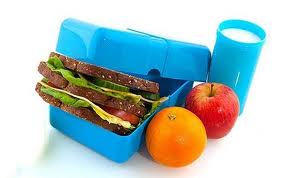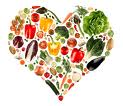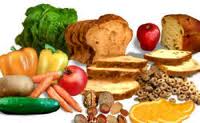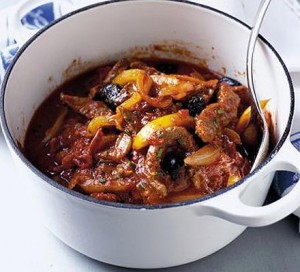Posts Tagged ‘portion’
Monday, December 10th, 2012
It’s the Christmas party season again! How can we avoid putting on extra weight while having a great time? The following are some holiday eating tips to help you do just that so that you can still look good and be healthy in January.
- Don’t go to a party hungry. We often eat faster and more when we are hungry – therefore eat a wholesome breakfast and lunch on the day to avoid overeating at the party.
- Watch your portion. Treat yourself a nice drink, dessert, chocolate or sweets without guilt, but always watch your portion. Go for small portions. This way you can sample all the different foods. Moderation is always the key.
- Make a conscious choice to limit high fat items. High fat food items can be found in fried food, cream-based soup, cheese-filled casseroles, pies, processed meats such as salami and sausages, some pastries and baked goods.
- Try other versions of alcohol. Instead of beer, cider, creamy liqueurs try dry wine or spirits with diet mixer, which have fewer calories.

- Drink plenty of water. Alcohol and coffee can dehydrate your body.
- Physical activity. Take nice brisk walks with your loved ones and enjoy their company in the holiday season.
Tags: activity, alcohol, calories, carlow, christmas, diet, fat, healthy eating, kilkenny, nutrition, party, portion, snack, sugar, winter
Posted in General | Comments Off
Monday, August 20th, 2012
We all know how difficult it can be to come up with different, healthy and fun lunch box ideas – and that is why we end up packing up the same lunches over and over again! Packed lunches, just like any other meal, should have a balance of ingredients to fit in with healthy eating guidelines.
To help avoid packed lunch boredom, Nutritional Concepts has some simple ideas to make sure your child’s packed lunch packs a few surprises as well as a healthy, nourishing meal in the middle of the day:
- Offer a variety of foods throughout the week. Just like adults, kids can get bored with having sandwiches everyday for lunch. Why not try using the same fillings, but add excitement by changing the bread e.g. pitta bread, bagels or tortilla wraps.
- Make sure food looks good as well as tasting good by adding different colours and textures. Forget about your typical lettuce and tomato salad. Instead try a pasta salad or potato salad. Cook and drain the pasta or potatoes and mix with a little mayonnaise or olive oil, then add some cut up vegetables such as tomatoes, cucumbers and carrots. If you like you can also include some sliced turkey, chicken or ham. If you decide to pack a traditional sandwich, try cutting the bread with fun shapes using a cookie cutter.
- Sometimes kids, especially younger ones, don’t like to eat a whole sandwich or bowl of food. Instead you can try preparing cut up cubes of cheese, grapes, baby tomatoes, carrot sticks and mini crackers. Finger foods are really very appealing for all ages!
- Always include a drink in the lunch box to make sure they don’t become dehydrated during the afternoon. Water, fruit juice and milk are all healthy choices.
- Make sweet stuff, such as chocolate, biscuits and cakes an occasional treat rather than everyday items.
Overall, as well as something to drink, a healthy packed lunch should contain:
- One portion of vegetables or salad and one portion of fruit (fresh, canned or dried can all count).
- One portion of a milk or dairy item such as milk, cheese, yoghurt or a yoghurt drink.
- One portion of meat, chicken, fish, eggs, peanut butter, beans or other protein source.
- One portion of a starchy food, such as bread, pasta, rice, noodles or potatoes.
Tags: carbohydrate, carlow, fruit, fun, healthy eating, kids, kilkenny, lunch box, nutritional concepts, portion, salad, sandwich
Posted in General | Comments Off
Monday, February 13th, 2012
Valentine’s Day might mean that there is a chance you’ll be eating out. However, eating out usually means that we have little control over how the food is prepared or how large the portion is. Unlike packaged food, foods bought from cafes, restaurants etc. don’t have to carry nutritional information and so opting for the healthiest option might not always be easy. However, with these helpful tips eating out on Valentine’s Day can be both enjoyable and healthy!
General tips
- Never arrive at a restaurant hungry!
- Think ahead, if you know you’re eating out later, choose wisely earlier in the day to keep calories, fat, sugar and salt intakes under control.
- Leave a little time for your food to digest before you order a dessert. Give your stomach time to send signals to your brain you are full (approx 20 minutes). If you still want a dessert, consider splitting it with one of your friends. Opt for sorbets, or fruit dishes to balance out a heavy main course.
- Speak up about how you’d like a dish prepared e.g. ask for no mayonnaise.
- You’re more likely to overeat at an ‘all you can eat’ style buffet.
- Choose side orders of salad or vegetables to fill up on.
- Cut off any visible fat from meat to keep saturated fat intake down.
- Look out for smaller portions i.e. a main meal option as a starter size.
- Opt for dishes which are grilled, baked, steamed, poached rather than fried.
- Check the menu for dressings on salads and ask for it to be on the side. An otherwise healthy and nutritious salad could be drowned in a high fat sauce, bumping up its calorie content.
- Avoid cheese, cream or butter-based sauces
Tags: calories, carlow, diet, eating out, fat, healthy eating, kilkenny, low fat, nutrition, nutritional concepts, portion, saturated fat, sugar, Valentine's Day, vegetables
Posted in General | Comments Off
Monday, January 2nd, 2012
So it’s the time for New Year Resolutions again! As I researched the content for the first blog of 2012 I came across this video on the BBC website and decided to share it with you all. 
It gives us an insight into the psychological impact of sticking to New Year Resolutions. I hope this helps to keep you all on the right track. Enjoy!
< http://www.bbc.co.uk/go/em/fr/-/news/health-12068595 >
Tags: activity, calories, carlow, diet, healthy eating, kilkenny, lose weight, new year resolution, nutrition, nutritional concepts, portion
Posted in General | Comments Off
Monday, July 18th, 2011
- Eat fewer fried and fatty foods such as cream, butter, full-fat dairy products, fatty red meat, cakes, biscuits and takeaways – and find lower-fat alternatives instead.
- If you have to use oil, go for one that is packed with monounsaturates such as olive oil or rapeseed oil.
- Eat five servings of fruit and vegetables every day – they are low in fat and calories but will help to fill you up.
- Go for high-fibre carbohydrates such as wholemeal bread, wholegrain cereals, brown rice and wholewheat pasta. They are far more filling than the white stuff.
- Start your day with a bowl of porridge.

- Use a little less meat in dishes like stews, soups and casseroles and add barley, lentils or beans instead.
- Eat oily fish once a week. Lunch on sardines with toast or serve salmon for dinner.
- Slash the salt content of your diet – check salt levels before you buy.
- If you drink, stick to sensible limits – that means no more than 3-4 units a day for men and 2-3 units daily for women.
Tags: 5 a day, alcohol, carlow, diet, energy, fat, fruit, healthy eating, healthy heart, kilkenny, low fat, nutrition, nutritional concepts, portion, vegetables, vitamins and minerals
Posted in General | Comments Off
Monday, February 14th, 2011
Fibre is found in foods which originate from plants, such as cereals, grains, seeds, pulses, fruit and vegetables. To increase the amount of fibre you eat, you need to have more of these types of food as part of your diet.
There are two types of fibre: soluble and insoluble. Most foods contain a mixture of both.
It is a good idea to try to eat more fibre because most people in Ireland don’t have enough fibre in their diets. Insoluble fibre helps prevent constipation, and soluble fibre may help to reduce the amount of cholesterol in the blood.
Wholegrain varieties of starchy foods, such as wholemeal bread, wholegrain breakfast cereals, brown rice and wholegrain pasta, are particularly good sources of insoluble fibre.
Brussels sprouts, potatoes, cabbage, and carrots are all good sources of fibre, and so are beans and pulses, such as red kidney beans, baked beans, broad beans, butter beans, green beans, chickpeas, green lentils and black-eyed beans. Dried fruit – such as figs, apricots, prunes and dates – are also a good choice. Or try eating pears, apples, cranberries, avocados, pomegranates and blackberries.
When you have plenty of fibre in your diet, you need to make sure that you drink plenty of fluids – at least six to eight glasses a day. It is especially important to have plenty of water if you are constipated because fluids will help to keep things moving! If you get constipated a lot, talk to your GP.
Tags: 5 a day, activity, calories, carbohydrate, carlow, drinking, fibre, fruit, healthy eating, kilkenny, nutrition, nutritional concepts, portion, starchy, vegetables, vitamins and minerals
Posted in General | Comments Off
Monday, November 15th, 2010
Breakfast means “breaking the fast”. After a nights rest, eating gives you energy to spark the body into life again.
Breakfast also cuts down on mid morning ‘snack attacks’.
No time for breakfast?
- Set the alarm 5 minutes earlier.
- Make the sandwich the night before, pop it in the fridge, and eat it when you get to school / work with a carton of orange juice.
- A glass of milk and a banana are very quick and easy to eat.
- Fruit can be eaten on the way to school / work. Try bananas, apples, pears, peaches, etc.
Cereal and Milk
- Healthy choices – Shredded Wheat, Weetabix, Shreddies, Puffed Wheat, Fruit ‘n’ fibre, Porridge, Ready Brek, Rice Krispies, Cornflakes.
- Try not to add sugar, have sliced banana or sprinkle raisins instead. If you can’t do without, sprinkle less sugar or try an artificial sweetener instead.
- Sugar coated cereals may damage your teeth, so have these only as an occasional treat.
Toast, bread or muffins
- Choose wholegrain, high fibre white or malted grain varieties.
- Try peanut butter, sliced banana or just a thin scrape of jam or marmalade.
- Easy to eat on the move or on the way to school / work.
- Use only a thin scraping of butter, margarine or a low fat spread.
Cooked breakfast
- Can be healthy, but choose wisely.
- Try grilled tomatoes and mushrooms or baked beans on toast.
- Don’t fry your breakfast – try grilling bacon or low fat sausages and scrambling the egg.
Tags: breakfast, carlow, energy, fruit, healthy eating, kilkenny, nutrition, nutritional concepts, portion, snack, sugar
Posted in General | Comments Off
Monday, October 4th, 2010
An easy, super healthy stew full of vitamin C.
Ingredients:
- 1 onion, sliced
- 1 garlic clove, sliced
- 2 tbsp olive oil
- 300g pack beef stir fry strips, or use beef steak, thinly sliced
- 1 yellow pepper, deseeded and thinly sliced
- 400g can chopped tomatoes
- Sprig rosemary, chopped
- Handful pitted olives
Preparation and cooking times
Prep 10 mins Cook 20 mins
Method
1. In a large saucepan, cook onion and garlic in olive oil for 5 mins until softened and turning golden.
2. Tip in the beef strips, pepper, tomatoes and rosemary, then bring to the boil.
3. Simmer for 15 mins until the meat is cooked through, adding some boiling water if needed. Stir through the olives and serve with mash.
Make it vegetarian – Leave out the beef and cook 1 chopped aubergine and 1 chopped courgette along with the pepper. Finish by sprinkling over some feta cheese.
Per serving: 225 kcals, Protein – 25g, Carbohydrate – 7g, Fat – 11 g, Saturated fat – 3g, Fibre – 2g, Sugar – 6g, Salt – 0.87 g
Tags: beef, carlow, healthy eating, kilkenny, nutrition, nutritious, portion, stew, tasty, vegetables, vegetarian, vitamins and minerals
Posted in Recipes | Comments Off
Monday, August 9th, 2010
Eating a healthy balanced diet will provide you with all the nutrients you need to take part in your favourite sport or activity.
This means eating a wide variety of foods, see below for how to get the balance right.
If you take part in a sport regularly, perhaps you’re a member of a club or team, or a regular at your local gym, then the best way to get the most out of your sport is to:
- drink plenty of fluids
- eat plenty of fruit and vegetables
- eat plenty of starchy foods (carbohydrate) to keep you going during exercise such as rice, bread, pasta (try to choose wholegrain varieties when you can) and potatoes.
- eat some protein-rich foods such as meat, fish, eggs and pulses
- have some milk and dairy foods
- just eat a small amount of foods high in fat, salt and sugar
- eat enough food for your level of activity. If you eat too little then you won’t be able to keep up your exercise levels
It is important to eat a variety of these foods to make sure we get all the nutrients our bodies need.
Timing of meals around workouts is just as important as what you eat if you want to keep your energy levels up. For the first two hours after exercise, muscles can refuel their glycogen stores twice as fast as normal so it’s important to eat carbohydrate-containing foods as soon as possible after a workout or exercise session.
See my next blog for more on starchy foods for exercise.
Tags: activity, carbohydrate, carlow, fruit, healthy eating, kilkenny, nutritional concepts, portion, Sport, team, vegetables, vitamins and minerals
Posted in Sport | Comments Off
Monday, July 12th, 2010

Colourful, fun and a great way to give fresh fruit to your children.
Ingredients
250g strawberries
4½ tbsp runny honey
3 large ripe peaches or nectarines, peeled, stoned and sliced
5 large kiwi fruit, peeled and sliced
Method
1. Puree the strawberries with a hand blender. Sieve the puree to get rid of the seeds.
2. Stir 1 ½ tbsp of the honey into the puree. Then pour the strawberry puree into each of the ice lolly moulds until each mould is ⅓ full.
3. Freeze until firm – this should take 1 ½ hours.
4. Repeat this process with the peaches and 1 ½ tbsp of the honey, then the kiwi fruit with the rest of the honey, freezing between each fruit.
Prep time: 10 min, plus several hours freezing
Cook time: 0 min
Serves: 8
Tags: 5 a day, carlow, fruit, kilkenny, nutrition, nutritional concepts, portion, tasty
Posted in Recipes, Uncategorized | Comments Off










